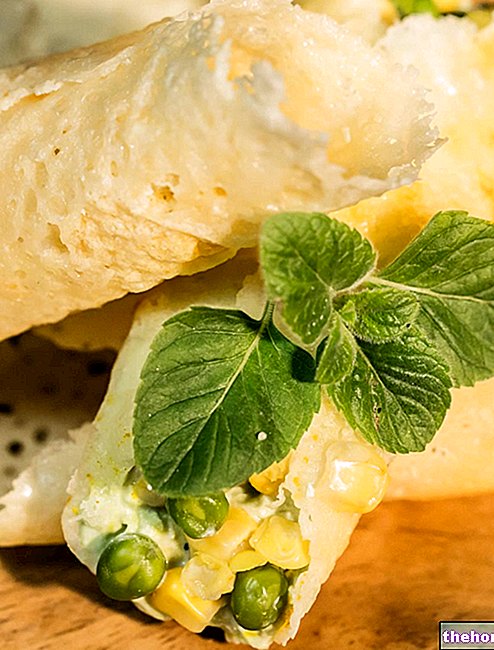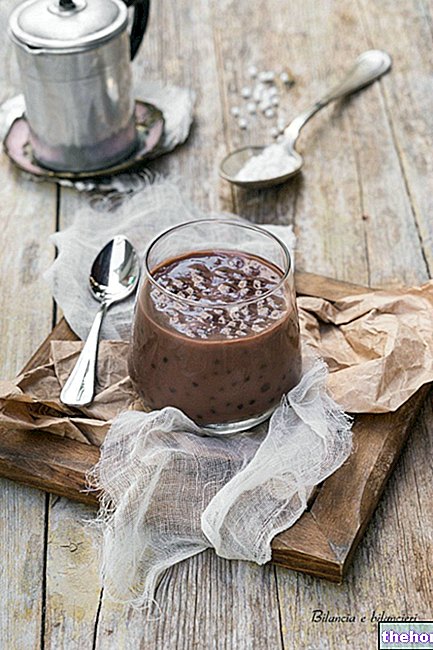After having fun together in the making of cow's milk yogurt, today we will get to know its vegetable counterpart more closely: I'm talking about soy yogurt, a fresh and delicious product that is obtained from soy milk, in turn extracted from the seeds of these. legumes.
As always, before discovering how soy yogurt is prepared at home, let's see some theory: in this way it will be easier for us to understand why certain steps are required.
- It is a 100% vegetable food, produced with full respect for animals and nature. For this reason, soy yogurt is very popular with vegans.
- One of the distinctive characteristics of soy yogurt is the absence of lactose, a sugar that is found in abundance in animal milk (cow's milk in particular), to which many people are intolerant. soy can also be taken by those who have a marked sensitivity towards lactose.
- It does not contain cholesterol, so it can also be taken by those suffering from hypercholesterolemia. Soy milk is a source of phytosterols, substances capable of significantly reducing blood cholesterol.
- As for the lipid fraction, soy yogurt is rich in unsaturated "friendly" fats for health
- It is a very digestible food because caseins do not appear in the protein profile, typical instead of animal-derived milks. In addition, soy proteins act as "scavengers of the arteries" by contributing to the reduction of bad cholesterol in the blood.
The preparation method is comparable to that analyzed in the video of the preparation of cow yogurt. Also in this case, in fact, it is necessary to inoculate particular bacterial strains in the soy milk:
- L. bulgaricus: responsible for the coagulation of soy milk proteins, this beneficial bacterium helps to make yogurt thicker
- S. thermophilus: responsible for the typical sour taste of yogurt
- Some soy yogurts are enriched with Bifidobacterium lactis, a well known probiotic able to optimize the functionality of the colon
At temperatures between 42 and 44 ° C, the bacterial strains inoculated in soy milk lower the pH (acidification) and release lactic acid starting from the sugars present (stachyose and raffinose). In this way, the proteins coagulate and the viscosity of the milk increases, until it turns into yogurt.
Video of the Recipe
Problems with playing the video? Reload the video from youtube.
Identity Card of the Recipe
- 54 KCal Calories per serving
-
Ingrediants
For 7 jars of soy yogurt
- 1 L of soy milk
- 125 g of soy yogurt
- 30 g of sugar
To enrich (optional)
- About 300 g (4 medium) of apricots
- About 300 g (2 medium) of peaches
Materials Needed
- Small saucepan
- Food thermometer
- Containers with screw cap
- Yogurt maker
- Wooden spoons
Preparation
- Pour the soy milk into a saucepan and stir continuously until it reaches 40-42 ° C, the ideal temperature for the fermentation of sugars.
Did you know that
If you want to prepare yogurt from self-produced soy milk, it is recommended to sterilize the liquid by boiling it for 5-10 minutes. At this point, the soy milk should be allowed to cool until it reaches 42 ° C.- Dissolve 125 g of natural soy yogurt in milk, also adding sugar (which can facilitate the fermentation process). Those who wish can replace soy yogurt with 8.5 g of freeze-dried enzymes, easily available in pharmacies.
- Pour the mixture thus obtained into glass jars.
- Place the jars without caps in the yoghurt maker and close with the specific lid: let it rest for 10-12 hours, until the desired consistency is reached, remembering that the longer the resting time, the greater the creaminess of the yoghurts.
For those who do not use the yoghurt maker
It is also possible to prepare soy yoghurt without a yoghurt maker: the only problem is maintaining the temperature at 40-44 ° C.
For this it is recommended to:- Heat the oven to 50 ° C
- Turn off the oven
- Turn on a 60-100W powered bulb
- Insert the yoghurt pots (or a single large jar) in the oven, and wrap them on a cover
- Let the yoghurts rest for 10-12 hours, avoiding shaking or touching them
- Close the jars with their respective caps
- Cool immediately in the refrigerator to 4 ° C
- Once the desired density has been reached, remove the yoghurt from the yoghurt maker, close with the respective caps and cool immediately in the refrigerator. Under optimal conditions, yogurts can be stored for 7 days.
- Those who wish can serve yoghurt with chopped fruit.
Alice's comment - PersonalCooker
Soy yogurt is definitely the right choice for those who don't like the taste of cow's milk, for those who are lactose intolerant and for those who have to keep cholesterol at bay. Even this delicious preparation can be used in the kitchen to make accompanying sauces or pasta sauces. Try making soy yogurt with your own hands: you will see, it will be fun.Nutritional values and Health Comment on the recipe
The soy yogurt proposed by Alice has a lower energy intake than that available on the market. Thanks to its lipid profile, it is a food suitable for diet against dyslipidemia and being 100% vegetable it can also be consumed by vegetarians and vegans. The suitable portion of soy yogurt corresponds to about 250ml (135kcal).
NB. The reference values of the lipid profile are NOT available in detail.




























